Sheer fabrics are undeniably beautiful, but many sewists hate to work with them. As beautiful as they are, sheer fabrics are finicky, delicate, and require great attention to detail. On the other hand, they do produce some of the best clothing pieces, and look good on almost anyone and anything.
If you decide to work with sheer fabrics, don’t lose hope. There are many tips, tricks, and techniques that you can employ when working on sheer fabrics. Read on, and you’ll be sewing these beautiful materials in no time.
What Are Sheer Fabrics?
Sheer fabric is any type that is semi-transparent. Technically speaking, sheer fabric is any material created with a thin thread and/or a low density knit. This low density or thinness gives sheer fabric its semi-translucent quality, which is also often referred to as sheer.
Sheer fabric can be further broken down into levels of sheerness. These levels are expressed in numbers ranging from 3 to 100; a lower number indicates a more sheer fabric, while higher numbers indicate a higher level of opacity.
A 3 indicates an extremely thin and barely visible fabric, which can be both rare and expensive. A 15 is the standard for stockings, while numbers around 30 refer to semi-opaque fabrics. A 100 refers to completely opaque fabrics.
In this way, sheer fabrics can encompass many different types of fabrics. Popular examples are silk, gossamer, and nylon. Sheer fabrics can also come in many different textures, although most of them are thin, light, and delicate, due to their low density.
Sheer fabrics also come in a wide range of colors, although the most common are neutral browns and shades of white, like eggshell, cream, and ivory. Some sheer fabrics are embroidered with patterns and designs to make them more interesting and versatile.
See our guide: 8 best places to buy cheap fabric
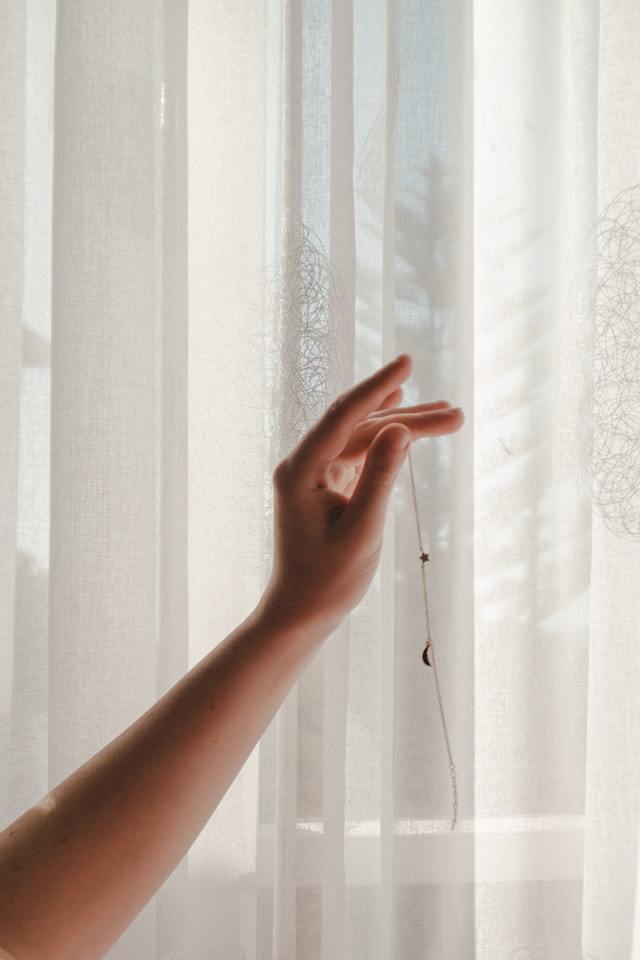
Where Are Sheer Fabrics Used?
One of the most common uses is in curtains, as sheer fabrics have the perfect qualities for this decoration. Because they are semi-transparent, they don’t completely block the light and allow a certain degree to pass through during the day.
On the other hand, they can still provide privacy from the outside. Finally, sheer fabrics look great against a window, as they are light enough to be lifted by the wind and can provide a partial view of the outdoors.
Another common usage is in DIY lingerie, especially in pantyhose and stockings. Sheer fabrics are light on the skin and, while they generally offer very little insulation, are great for aesthetics.
Sheer fabrics can also be used as a part of clothes, such as lining on the inside of jackets or coats. They can also be used to embellish clothes, like in wedding gowns and costumes. Sheer fabric can finally be used to add bulk to clothes, as they are relatively cheap, light, and can be layered easily.
Which Sheer Fabric is Best?
There are several materials that fall under the sheer fabric category, and picking the right type to work with is important in any project. For example, the best material for curtains will not always be the best material for a jacket lining.
While it is something that most sewists, especially hobbyists, overlook, understanding the level of sheerness is helpful. At the very least, it can help you determine if there are better sheer fabrics to work with; at worst, they can help you avoid a true fashion disaster like this incident from 2013 (DataColor explains how sheerness affected that incident here).
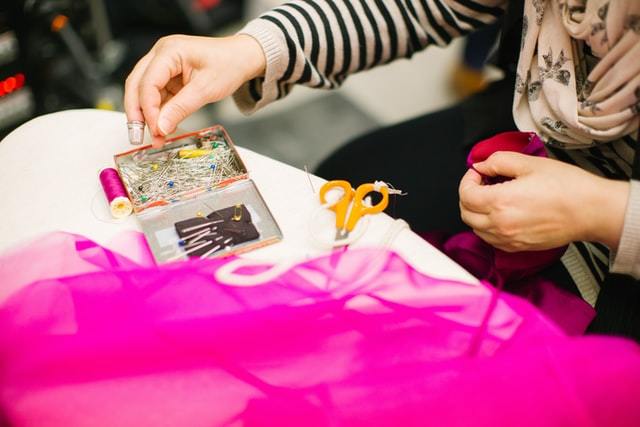
How to Sew Sheer Fabric
No matter the type, however, you will need to learn the techniques necessary for sewing sheer fabrics.
For beginning sewists, it’s generally recommended to avoid sheer fabric altogether, as it needs to be approached differently than other types of fabric. Its thinness brings new issues to the table, which demand specific techniques.
Let’s take a look at what these different techniques are and how to apply them:
How to Cut Sheer Fabric
When it comes to sheer fabric, sharp is always better. This is especially true when cutting sheer fabric; if you thought that sewing shears needed to be sharp before, they need to be even sharper now. Experienced sewists will always tell you to use your sewing shears for sewing and nothing else. If you can afford it, try to do the same with sheer and lightweight fabric shears.
Apart from quality, you should also use shears that you are comfortable with. If you do feel like investing in a new pair, this article may help you pick the ideal set for you.
Other than investing in a good pair of shears, it’s also wise to use a good cutting table. It should be an appropriate height and give you an amount of space that is comfortable enough to work with.
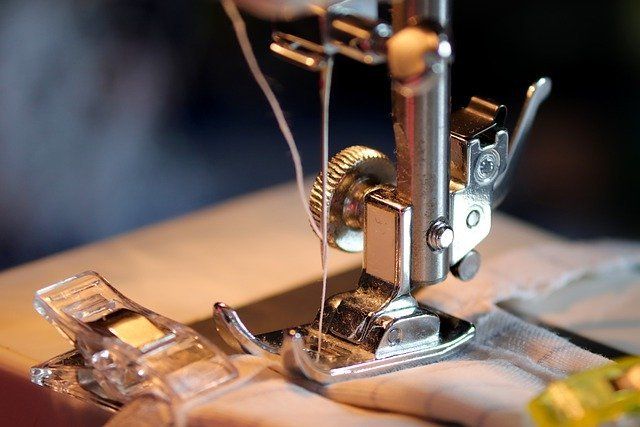
Marking Sheer Fabric for Cutting
Perhaps the biggest problem with cutting sheer fabric is that you cannot mark it. Sheer fabric moves around very easily, is difficult to pin without ripping, and some types of sheer fabrics retain markings. To counter that, this article from Ageberry shows you how to use masking tape to mark cuts and help guide straight lines.
How to Pin Sheer Fabric
As mentioned, pinning sheer fabric is very difficult, as you have a high chance of ripping it in the process.
Aside from that, because of the thin thread count, any pokes you make into sheer fabric can leave holes that are glaringly obvious. Much like the issue with cutting sheer fabric, the solution to this problem is using high quality, sharp, silk or fine-pointed pins.
Put aside your heavy-duty pins for now and invest in a pack these specialty pins; your final product will thank you for it. On top of that, it’s wise to keep this set in their own pincushion, so you don’t accidentally mix up your heavy-duty pins with your silk ones on sheer fabric.
With a Sewing Machine
While sheer fabric may seem too delicate, it is possible to sew it with a sewing machine.
But not all sewing machines are up to the task. To ensure that your model can handle sheer fabric, be sure to use the recommended feet, needles, and thread. After that, make sure to test out a bit of scrap fabric, so you don’t accidentally ruin the whole project.
What Sewing Machine Feet Do I Need?
Sewing machine feet can help you gain control over your material. This especially helpful for fabrics that like to glide around, like sheer fabric. To help you out, you can use a Teflon presser foot, which can easily glide over semi-transparent fabrics better than other feet. A walking foot is also a good option, as it can minimize sheer fabric’s shifting.
What Size Sewing Machine Needle Do I Need?
Because sharper is better in the business of sewing sheer fabric, needles make a huge difference in sewing sheer fabrics. Of course, finer is always better. Remember that the smaller a needle’s size number, the finer the needle. For sewing sheer fabric, you want a 70/10 size needle at the very least. If that still doesn’t work, go down to 65/9, or 60/8 size needles.
What Sewing Machine Thread Do I Need?
Much like the needle, the type of thread you choose makes a huge difference. Because sheer fabric is composed of very fine fibers, typical thread is often too heavy to use. Instead, be sure to use a fine thread that’s covered with cotton or polyester cotton. This will reinforce the strength of the thread to increase its lifespan, while being soft enough to avoid damaging your project. Alternatively, you can use bobbin thread, which will help you achieve seams that are almost invisible.
Sewing Machine Techniques
While you may have all the feet, needles, and thread that you need, it will still come down to the techniques you use when sewing sheer fabric. These three techniques can help you sew with sheer fabric.
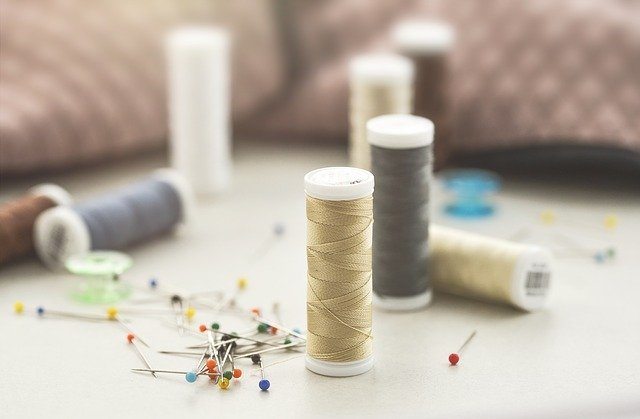
Tissue Paper
Have you ever wondered how to sew sheer fabric without puckering? The tissue paper trick can help you do just that.
To use this technique, pin a small strip of tissue paper under the seam line of your sheer fabric, ensuring it’s about an inch above the top edge. The tissue paper will act as a running board when you are stitching, which will prevent the fabric from sinking into the needle plate and bunching up.
Of course, the tissue paper will be sewn along with the fabric, but you can easily tear it away once you’re done. If you’re worried about destroying the fabric along with it, try soaking the tissue paper in water first.
Securing Sheer Seams
In most fabrics, seams are secured using a backstitch at the seam’s start and end. Because sheer fabrics are too thin, this isn’t possible. Instead, stitch the first and last quarter inch of the seam using small stitches.
Do this by reducing the stitch length to a 1.0 to 1.5 mm setting at the beginning of the seam, then pull the thread tails to keep the fabric from sinking. Stitch the first quarter inch with small stitches, and raise the stitch length to a normal length once you’ve passed the quarter-inch mark. To lock the seam, go back to the smaller setting.
Sewing Edges
Of course, the trickiest part to learn is how to sew sheer fabric edges. When using thin fabrics, it’s best to stick with a narrow hem. To do this, fold ¼ inches inside the edge and stitch as close to the edge as possible. Then, trim the seam allowance as close to the stitch as possible. Fold again and stitch the hem. You may need some practice for this; when all else fails, bind the edge with a bias tape.
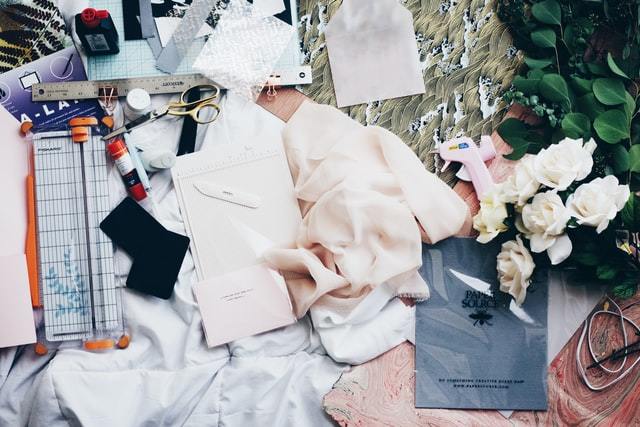
How to Sew Sheer Fabric By Hand
Sheer fabric is one of those materials that may be better sewn by hand. For one thing, it requires very specific feet, and machine sewing will give you the problem of sheer fabric that continually sinks into the needle plate.
If you want to sew sheer fabric by hand, the same techniques apply from using a sewing machine. This makes it a safer and more appealing option, so long as you have the patience and time. Securing seams should be done by making smaller stitches, only using silk and fine pins, and using sharp and high-quality shears. The only thing you don’t need to worry about is sinking fabric.
When sewing sheer fabric by hand, make sure to use tape to create markings. It’s also wise to work on a flat surface, so you can ensure a consistent cut.
Sewing Sheer Fabric Curtains
When sewing with sheer fabric, practice makes perfect! And what better way to practice that than by making curtains out of sheer fabric? This tutorial is a great way to start off your sheer fabric adventures.

Materials
- 3 yards of sheer fabric.
- Matching thread.
- Rolled hem presser foot and normal presser foot.
- Straight pins.
- Scissors.
- Chalk.
- Pattern paper.
- Sewing machine.
Procedure
- Measure the height and width of your window, adding at least 6 inches to the height and 2 inches to the width for the curtain panel measurements. Feel free to make your curtain longer if you want extra draping. Once measured, cut out the measurements to make two equal rectangles.
- Hem all four edges of the fabric with a rolled hem presser foot.
- Now, measure the width of your curtain rod and add 2 inches. Fold the top edge of your fabric equal to this measurement. Pin along this edge, then about 1 inch from the top of the fabric.
- Sew along these two rows of pins and you will have your curtain rod pocket.
- Finally, fold the bottom edge to the back and sew.
Conclusion
Sheer fabric can be hard to work with. However, with a few investments in high-quality materials and a bit of practice, anyone can become an expert in sewing with sheer fabric.
